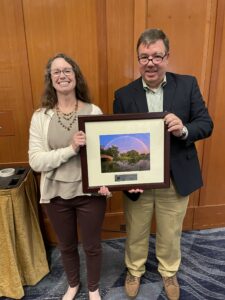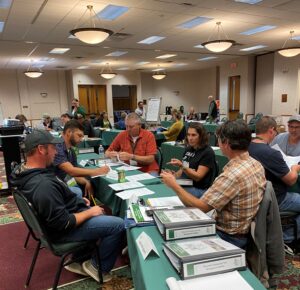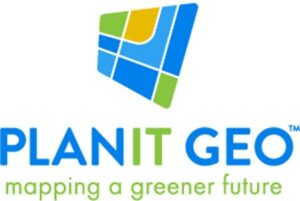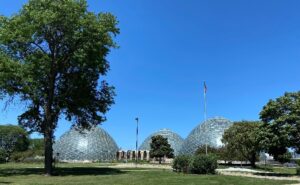By: Dan Buckler, Urban Forest Assessment Specialist
The scientific community continues to grow its understanding and appreciation of the ecosystem services that urban trees offer. That is, we now know more about the good trees do, but we also better understand what we don’t know. This nuanced perspective has manifested itself in updated estimates of ecosystem benefits within the Wisconsin Community Tree Map (WCTM).
The WCTM is a compilation of tree inventories from around the state, comprising 910,000 trees across 180 organizations. One of the application’s many interesting and useful functions is the estimation of trees’ eco-benefits. This information can be found for an individual tree simply by clicking it and then the “Eco-Benefits” box. The eco-benefits can also be estimated for a collection of trees by navigating to the “Hub” tab, then clicking “Stats” and “Ecosystem Benefits.”
Estimated benefits showcased in the tree map include annual stormwater reduction, air pollutant reduction and carbon sequestration, as well as lifetime carbon storage. All these benefits are expressed by quantity, volume or weight and by the monetary impact of the trees.

Example of the TreePlotter Inventory Map
Continue reading “Updated Eco-Benefits In The Wisconsin Community Tree Map” →





 The Arbor Day Foundation’s Recertification
The Arbor Day Foundation’s Recertification 

 You may have participated in this survey led by DNR Urban Forestry Coordinator Don Kissinger in 2020 (if so, thank you!) Wisconsin municipalities with more than 2,500 residents were asked a series of questions about the types of trees they prefer to plant (such as root stock type and caliper size), which lesser-used species they had successfully planted, which species they cannot find but would like to plant, and whether they use a gravel bed.
You may have participated in this survey led by DNR Urban Forestry Coordinator Don Kissinger in 2020 (if so, thank you!) Wisconsin municipalities with more than 2,500 residents were asked a series of questions about the types of trees they prefer to plant (such as root stock type and caliper size), which lesser-used species they had successfully planted, which species they cannot find but would like to plant, and whether they use a gravel bed.